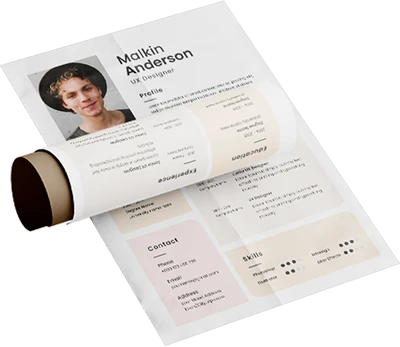Table of Content
Know About the Utility and Advantages of Applicant Tracking Systems Below
Hiring the right candidate for a particular position often becomes difficult for companies. This can happen due to different reasons, such as not finding the perfect applicant or resume during the given time. A lot of times, companies receive tons of resume daily, but none of them fits into their requirements due to lacking in particular areas. This concern can be addressed by using an automated system that can filter the right applicants or resumes. Luckily, ATS systems are created to handle this exact problem, allowing companies to find the right CVs created by taking professional resume writing services. If you do not know what is an ATS resume, you are at the right place to know every thing.
Nowadays, companies are using automated systems in every department to ease up their work. From IT to inventory management, you can find advanced software products everywhere capable of handling tasks on their own. The department of human resources also required a system that can help them to automate resume selection based on some specific criteria. With the help of ATS systems, they can do this job without worrying about selecting the wrong candidate for the screening process. These systems are created to automatically select profiles based on the rules defined to them by the respective employers.
If you do not know what is an ATS resume and how does it work for companies, read this blog in detail. It will give you a brief overview of these systems, as why they are created and how they simplify profile selection for companies using cognitive abilities. Let’s start from the basics understanding what is an ATS resume, and why companies need them to ease up their selection job.
What is an Applicant Tracking System (ATS)?

The Applicant Tracking System (ATS) operates as a crucial gatekeeper in the modern recruitment process. Its primary function involves the systematic parsing of a resume’s content into distinct categories, followed by a meticulous scan for specific keywords relevant to the job description. This sophisticated software plays a pivotal role in streamlining the initial screening phase, aiming to sift through a deluge of applications swiftly. By leveraging advanced algorithms, the ATS serves as an initial filter, separating potentially qualified candidates from those who may not meet the basic requirements of the position.
In essence, the ATS serves as a frontline defense mechanism for recruiters, tasked with the formidable challenge of managing large volumes of applications. Its purpose is not only to expedite the hiring process but also to ensure that recruiters invest their valuable time in assessing candidates with the highest job success potential. Through its automated screening process, the ATS identifies discrepancies between applicant qualifications and job requirements, swiftly relegating less suitable candidates to the lower end of the priority list. Consequently, recruiters can direct their attention to evaluating candidates who demonstrate a closer alignment with the job specifications.
However, while the ATS significantly streamlines the initial stages of recruitment, its reliance on keyword matching can sometimes lead to unintended consequences. Despite its efficiency in identifying basic qualifications, there’s a risk that highly qualified candidates who might not use specific keywords could inadvertently be overlooked. Thus, while the ATS plays a crucial role in expediting the hiring process and managing high volumes of applications, human oversight remains indispensable to ensure that highly qualified candidates aren’t unfairly sidelined due to a lack of keyword optimization.
Importance of ATS for Companies

In the business landscapes, the reliance on Applicant Tracking Systems (ATS) to streamline the candidate selection process has become ubiquitous, and for compelling reasons. The evolution of the hiring process into a multifaceted endeavor is evident, driven not only by an influx of applicants but also by the increasing intricacies of job requirements and organizational needs. Amidst this complexity, companies encounter constraints in terms of both time and resources, making it impractical to manually sift through the multitude of resume submissions.
The current job market is characterized by unprecedented competition and a deluge of applications for any given position. In response to this surge in volume, companies face a pressing need to optimize their hiring processes to remain competitive. However, traditional methods of manual resume screening prove to be increasingly inadequate in managing the sheer volume of applications. Consequently, the implementation of ATS emerges as a logical step forward, empowering organizations to navigate the intricate landscape of talent acquisition with greater agility and precision.
Moreover, beyond the pragmatic benefits of efficiency and resource optimization, the integration of ATS aligns with the strategic imperatives of modern businesses. In a landscape characterized by rapid technological advancements and evolving market dynamics, companies are compelled to adapt and innovate continuously to maintain their competitive edge. By leveraging automation tools such as ATS, organizations can reallocate their human capital towards more strategic endeavors, such as talent development and organizational growth initiatives.
Working Procedure of ATS Systems

Within the intricate framework of modern recruitment processes, the Applicant Tracking System (ATS) assumes a pivotal role by meticulously parsing the cornerstone content of resumes into distinct categories. Subsequently, employing advanced algorithms, it conducts an exhaustive scan, meticulously seeking out specific and pertinent keywords essential for determining the suitability of a job application. This automated vetting process serves as the initial gateway, aimed at efficiently filtering out candidates who may not meet the fundamental prerequisites of the position.
In essence, the ATS functions as a sophisticated tool designed to alleviate the burden of manual screening, enabling recruiters to optimize their efforts in candidate evaluation. By relegating unqualified applicants to the lower tiers of consideration, the ATS serves as a gatekeeper, ensuring that only candidates meeting the basic criteria advance further in the selection process. This strategic approach not only expedites the screening phase but also safeguards recruiters’ valuable time, allowing them to channel their expertise towards assessing candidates who exhibit a closer fit with the role’s demands.
However, the dependence of ATS on matching keywords or phrases often becomes a challenge for the companies. Hence, achieving a balance between automation and human intervention becomes imperative to mitigate potential oversights and ensure a more comprehensive assessment of candidates. Striking this equilibrium facilitates a more nuanced approach to recruitment, wherein the benefits of technological advancement are harnessed without compromising the discernment and expertise of human recruiters.
How to Write an ATS-Friendly Resume?

Now that you have understood how companies are using ATS systems to select profiles, let’s take a look at the procedure to write resumes that can fit in their criteria. Being a beginner, you must need to know how to write a resume summary that can get the attention of the employers. Here are some rules that you need to follow to write a resume that can get a standout presence in front of them.
Optimize with Keywords
To enhance the compatibility of your resume with an Applicant Tracking System (ATS), a strategic approach involves optimizing it with the appropriate keywords—a process commonly referred to as keyword optimization. Unlike mere buzzwords, which often encompass vague or subjective terms like self-starter, keywords encompass both soft and hard skills for resume, as well as the expertise accumulated throughout your career journey, thus underscoring your suitability for your desired position.
Keyword optimization entails strategically integrating terms and phrases into your resume that directly correlate with the requirements of your target job. These keywords serve as markers that enable the ATS to effectively identify and assess the alignment between your qualifications and the job description. By meticulously selecting and incorporating pertinent keywords, you not only enhance the visibility of your resume within the ATS but also increase the likelihood of being recognized as a suitable candidate for the role.
Boost your chances of landing your dream job with a standout resume!
Get Noticed
Choose the Right ATS Resume Format
Despite common assumptions, a PDF format may not always be the most conducive option for Applicant Tracking Systems (ATS). While PDFs excel in preserving the design and layout of your resume template, their compatibility with various ATS software platforms is not universal. When presented with the option to upload your resume to an applicant tracking system, opting for a PDF version of your resume is viable. However, in cases where the system fails to specify compatible file types, erring on the side of caution by utilizing a Word document in .doc or .docx format is advisable.
Navigating the intricacies of ATS compatibility necessitates a nuanced understanding of file formats and their implications for resume submission. While PDFs offer the advantage of preserving the visual integrity of your resume’s layout, their suitability depends on the specific requirements of the ATS being utilized. Therefore, when in doubt, prioritizing compatibility over aesthetic considerations ensures that your resume undergoes seamless processing within the ATS environment.
Write a Catchy Headline
Incorporating a headline into your resume is essential for optimizing its impact, particularly when navigating through Applicant Tracking Systems (ATS). Positioned immediately after your contact details and preceding your summary statement, a well-crafted headline serves as a succinct introduction, encapsulating your professional identity and aligning it with the targeted job position. Notably, many companies utilizing ATS platforms incorporate job titles into their assessment criteria, making the inclusion of a headline strategically advantageous.
The strategic placement of the headline within the resume structure enhances its visibility and facilitates efficient parsing by ATS algorithms. By strategically incorporating the targeted job title or a related descriptor into the headline, you align your resume with the specific criteria established by the hiring company. This proactive approach not only signals your candidacy’s relevance but also enhances the likelihood of your resume progressing through the initial screening stages of the recruitment process.
Use a Clear Resume Design
In optimizing your resume for compatibility with Applicant Tracking Systems (ATS), simplicity emerges as a guiding principle. Complex resume designs or unconventional formats not only pose challenges for most ATS platforms but also disrupt the streamlined process of resume evaluation for recruiters. These intricate designs not only befuddle ATS algorithms but also frustrate recruiters accustomed to swiftly navigating resumes for key information located in expected areas within the document.
By adhering to a minimalist approach in resume design, you enhance its compatibility with ATS systems. A clean and straightforward layout ensures that vital details are presented in a manner conducive to rapid comprehension, facilitating the seamless flow of information for both ATS algorithms and human reviewers. Moreover, a minimalist design streamlines the scanning process for recruiters, enabling them to swiftly locate and evaluate pertinent qualifications and experiences without the distractions posed by elaborate formatting.
Frequently Asked Questions
| What is an Applicant Tracking System? The Applicant Tracking System (ATS) is a specialized software utilized by recruiters and employers throughout the hiring process. Its primary function is to gather, organize, scan, and evaluate the multitude of job applications submitted for open positions within an organization. |
| Why companies prefer to use ATS systems? Companies are actively preferring to use ATS systems to filter out right profiles. It simplifies their job by automatically picking the right profiles that fits within the selection criteria of the company. |
| How do Applicant Tracking Systems work? The ATS categorizes the content of a resume before conducting a thorough scan for particular keywords that are deemed specific and pertinent. This process is crucial in determining whether the job application should be forwarded to the recruiter or not. |
Final Words
That takes us to the end of this blog in which we have discussed what is an ATS resume and how it should be written as per the best market standards. Having a clear understanding of ATS-friendly resumes is quite important because it allows you to craft resumes in the correct manner. This blog has discussed all the essential tips you need to know about ATS-friendly resumes. Furthermore, it has also defined how ATS systems work, allowing employers to select the right profiles every time.
If you are looking for an agency that could help you to write quality resumes, get in touch with us today. We will help you to write ATS-friendly resumes, precisely as per the given requirements.

Unleash your brand story`s potential with eContentSol – your creative writing companion. We craft narratives that captivate. Ready to elevate your content game? Dive into creativity with us and let`s bring your ideas to life.

